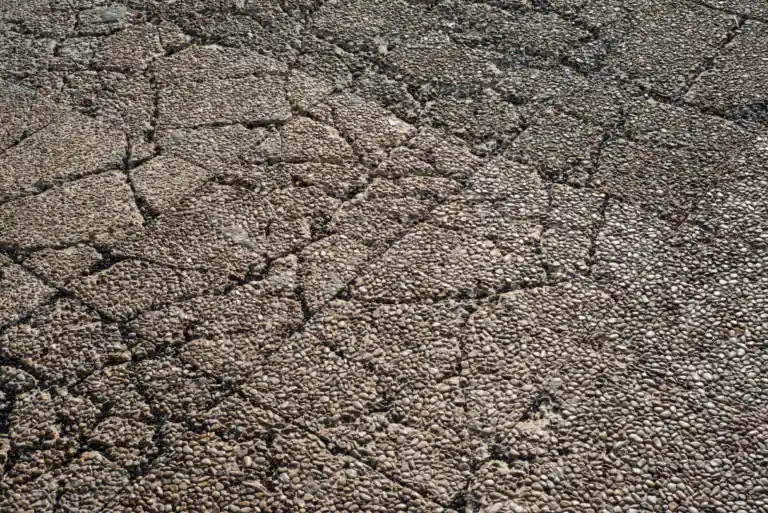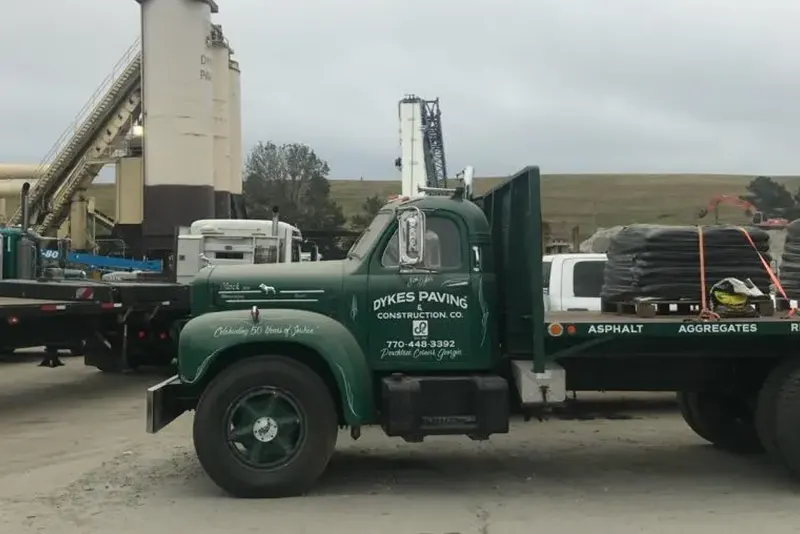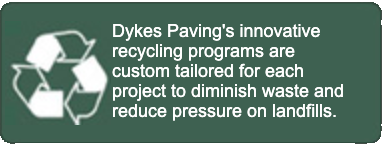Asphalt (also known as bitumen in some countries) is easily identified due to its black and sticky texture. Before it is extracted from crude petroleum or natural deposits, asphalt is also known as pitch. This highly viscous liquid is mainly used in road construction and waterproofing of roofing, as its gluey attributes make it the ideal material to bond aggregate particles together. The final mixture of asphalt combined with aggregate is hence known as asphalt concrete.
What is Recycled Asphalt?
In technical terms, the Western United States defines virgin asphalt as a “bituminous substance that is used to bind aggregate together to create asphalt concrete.” Generally, asphalt concrete consists mainly of aggregate in which asphalt only makes up 5 to 7% of the total composition.
Recycled asphalt on the other hand is quite simply asphalt concrete which has been reprocessed by mixing the reclaimed asphalt pavement with new asphalt and aggregates. In some circumstances, a recycling agent is also introduced into the mix to improve the performance of the recycled asphalt by softening and rejuvenating its mechanical properties.
The process of creating recycled asphalt usually begins with cold planing (also known as cold milling). In this procedure, the top layer of the pavement is removed using a cold planning machine. The pavement is usually made from Portland cement concrete which can then be crushed and used as the aggregate to form the recycled asphalt. After the recycled asphalt has been mixed, the composition can then be used to overlay the exposed pavement, thereby completing the recycling process.
Other types of asphalt recycling are known as hot recycling, hot in-place recycling, hot mix-remixing, hot mix-repaving, hot mix-heater scarification and full depth reclamation.
Why Recycle Asphalt?
Despite its elaborate process, recycling asphalt can help local governments save money from having to pave roads with new materials. At the same time, the act of recycling also introduces new business opportunities and will help create a greener environment in the long run as well. In 1990, the California Integrated Waste Management Board concluded that Construction and Demolition materials (including asphalt) made up 28% of the waste stream, totalling up to 11 million tons of waste in that year alone. A much deeper studied discovered that out of the 11 million tons of waste, 8.2 million tons were found to consist of asphalt, dirt, concrete, brick and other rubbles, out of which only 57% was recycled.
As asphalt also contains a high amount of oil, the price of virgin asphalt has also dramatically increased in line with the drastic oil price hike. With oil prices now hovering around the USD90 range, the demand for recycled asphalt is also growing in tandem as recycled asphalt is cheaper and yet just as durable as virgin asphalt.
Even if costing is not a problem, we are all obliged to protect the Earth’s natural resources for the sake of sustaining future generations. The repeated creation of asphalt is also known to contribute to environmental pollution, which is why recycling such toxic material is an effective method of reducing toxin production around the globe.
The creation of materials such as asphalt is also believed to contribute to climate change problems due to the burning of fossil fuels during the creation of asphalt. In contrast, producing recycled asphalt does not require any form of fossil fuel to be burnt, thereby preserving on our natural resources while also decreasing air pollution.
Roads paved with virgin asphalt have also been blamed for the urban heat island effect, which is a phenomenon where heat from the sun is absorbed into the ground, thereby heating the paved area even after the sun has set. On the other hand, recycled asphalt is lighter coloured, thereby making it less susceptible to heat absorption from solar radiation and hence, contributes less to the urban heat island effect.
At the same time, the introduction of recycled asphalt into the market can not only meet the USD100 billion asphalt demand but can also help create job opportunities as more recycling asphalt plants are created. As Asian countries in particular began to increase the amount of roadwork constructions, the recycled asphalt industry becomes a blue ocean choice in a red sea filled with expensive virgin asphalt suppliers whose prices are closely dependent on the price of oil at that point of time.
How to Fill Gaps with Recycled Asphalt
Homeowners can also contribute to a greener environment by applying recycled asphalt along their driveways as well. The first thing you need to do is thoroughly clean the surface of your pavement. It is best to do this with a high powered air blower first followed by a high power washer. You might also want to do this on a sunny day as it is important to allow the surface of your pavement time to completely dry before proceeding to the next step.
While waiting for the surface to dry, carefully mix hot or cold crack fillers. You can then fill up the holes in your driveway with the crack fillers, followed by a generous shovelling of recycled asphalt. To achieve a smooth finish, do run an asphalt rake over the surface area. To further condense the gap and prevent further cracks, you might also want to run a vibrating plate (or hand tamper) over the filled surface as well.
Next, carefully corner off the area to allow the filled gaps to completely dry for at least 24 hours before proceeding to apply commercial-grade asphalt seal coat to the surface. The purpose of the seal coat is to protect and extend the lifespan of the newly applied recycled asphalt, so do not skip this step.
How to Create Pavements with Recycled Asphalt
If you’re creating a new pavement, you might want to consider surfacing your pathway with recycled asphalt as well. A depth of at least 3 inches should first be created virgin aggregate is added, followed by recycled asphalt. Although recycled asphalt tends to leave tracks due to the higher content of oil, line paint and rubber, an extra layering of asphalt sealant can easily protect the rest of your flooring from asphalt contamination. Generally, we recommend that the sealant should at least be 1 inch thick to protect the integrity of the newly installed asphalt pavement.








